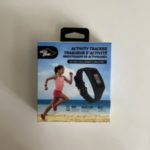Our new report, Passing the Buck: the toxic cost of dollar store products in Canada, found heavy metals such as lead, cadmium and other toxic chemicals such as PFAS, “forever chemicals” in dollar store products. Many of these products are marketed toward children. Our report highlights just how little we know about the products on our shelves and the urgent need for greater transparency, retailer accountability, and stronger laws on hazardous substances.
Key findings:
- At least one in four products tested contained toxic chemicals, including lead, in children’s products and electronics such as headphones.
- All of the cash register receipts tested contained bisphenol-S (BPS).
- All the food cans tested contained toxic chemicals (60 per cent with BPA, 40 per cent with PVC and polyester resin).
- All of the microwave popcorn packaging tested contained PFAS.
Phthalates, bisphenols, and PFAS or “forever chemicals” were found in food packaging, toys, recess and daycare items, and exposing children to these substances is particularly dangerous. For example, we found that a children’s activity tracker and earbuds contained more than 8000 times the external level of lead established for children’s products. Alarmingly, there are no regulations for lead hidden inside children’s products. This gap in regulation is a loophole that dollar stores are using to sell products that contain high levels of lead – and not break any laws.
There is no safe limit on lead. Children’s products should not contain this hazardous substance.
Children are particularly susceptible to the effects of harmful chemicals due to their rapidly growing bodies and hand-to-mouth (putting things in their mouth) behaviour. When they use these products, they tend to put them in their mouth or break them – exposing hidden toxic components that can be ingested, inhaled or absorbed. Even in small amounts, exposure to heavy metals and hazardous chemicals is linked to reproductive, behavioural, metabolic impacts and chronic diseases such as cancer, asthma and diabetes. Toxic exposures are also linked to learning disabilities such as low IQ, autism spectrum, and attention-deficit/hyperactivity disorder (ADHD).
The report’s findings reveal the persistent failure of Canada’s regulatory system to adequately protect the public’s health, especially populations disproportionately affected by toxics. Many low-income and racialized communities already face systemic economic barriers and cannot avoid toxic exposures by choosing more expensive toxic-free alternatives.
The federal government has introduced a bill to reform the Canadian Environmental Protection Act (CEPA), Canada’s main toxics law, which will be debated in the House of Commons this Fall. Meaningfully reforming CEPA and improving Canada’s Chemicals Management Plan can help ensure protection from toxic exposures.
People living in Canada should not be poisoned by the products they purchase from discount stores, regardless of their socio-economic status. In addition to retailer accountability, the government must also protect consumers from these toxic exposures. Our toxics laws need to be amended to protect consumers, particularly children, and products must be tested and removed from commerce when they pose a risk to our health.
Thank you to the health and environmental advocates voicing their support for this research and call to action:
“Racialized and low-income communities are targeted by low-cost retailers that, despite their own environmental and social responsibility reporting, are selling these communities products laden with harmful substances. For individuals and communities whose only accessible retail option is a discount store, we need to ensure that they have equal protection to those whose financial, geographical and socio-economic privilege allows them to buy their way out of these toxic exposures.” – Dr. Ingrid Waldron, Executive Director of the ENRICH project.
“Given the adverse health impacts of these hazardous substances on children, we need the government to take urgent action and for companies to own up to their role in preventing these harms. We hope the Canadian government demonstrates their concern for impacted communities and strengthens federal chemicals legislation this fall.” Dr. Jane McArthur, Canadian Association of Physicians for the Environment (CAPE) Toxics Program Director.
“We need more action from retailers and governments. Weak regulations and loopholes, unlabelled toxics, no product testing and weak enforcement are creating an ongoing and unmanaged exposure risk for all of us – but particularly for the low-income and racialized communities that can’t buy their way out of these health hazards.” – Kanisha Acharya-Patel, Executive Director, Women’s Healthy Environments Network.
“Retailers pass the buck to regulators when they justify these unacceptable lead levels in products, and regulators do the same when they don’t create strong, comprehensive laws that protect our health and the environment.” – Jennifer Beeman, Executive Director, Breast Cancer Action Quebec
If we give people and retailers the information they need to better protect themselves, their children and the planet, we will move that much closer to a less toxic, healthier and more equitable future for all. The full report can be viewed here: https://environmentaldefence.ca/report/passing-the-buck















